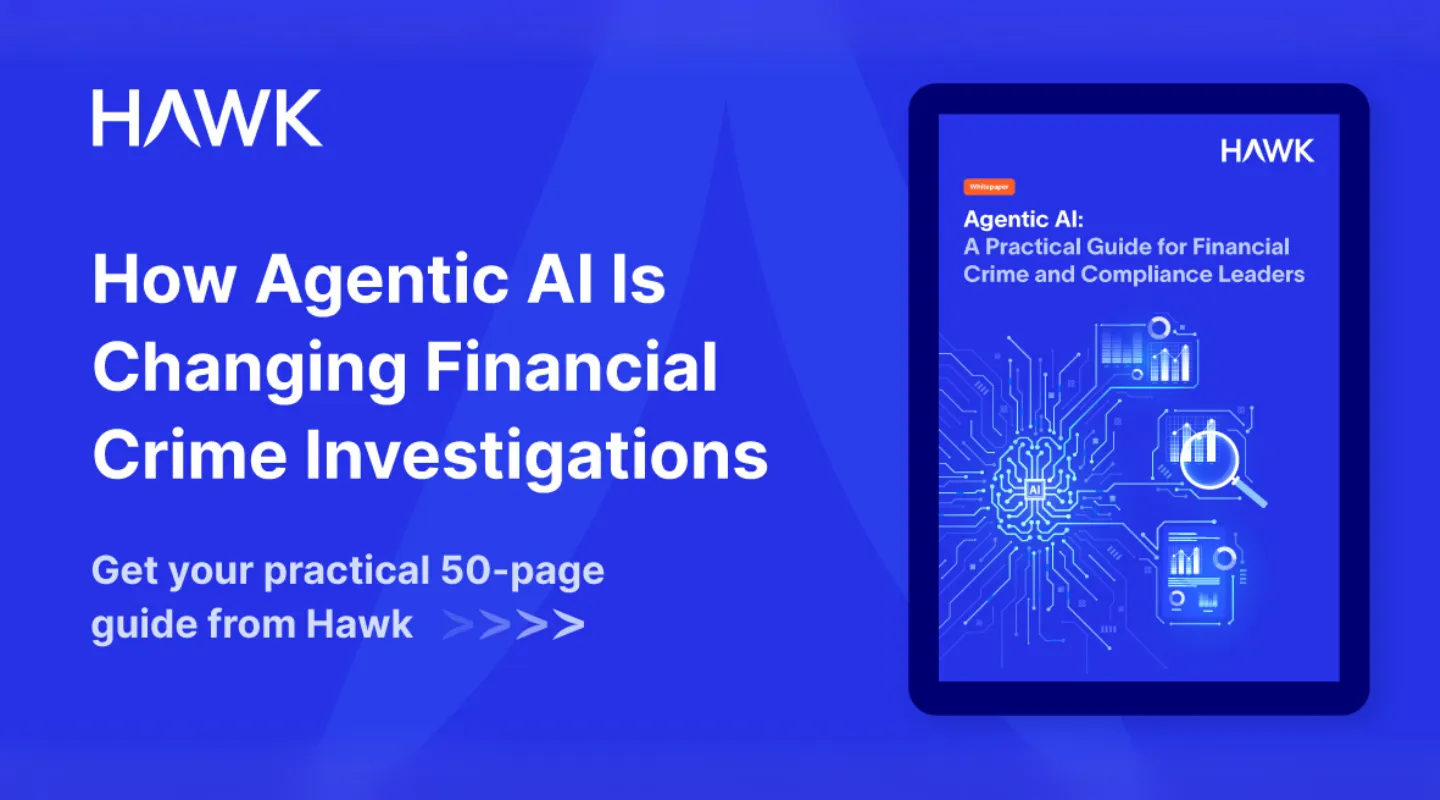Hawk Unveils Guide to Agentic AI for Financial Crime and Compliance

Hawk, the leader in anti-money laundering, screening, and fraud prevention technology, has released a whitepaper aimed at helping financial crime and compliance teams to understand how agentic AI can deliver significant value to their operations.
Agentic AI: A Practical Guide for Financial Crime and Compliance Leaders highlights how agentic AI, a transformative technology capable of planning and executing complex, multi-step tasks, is poised to fundamentally change how banks and payment firms combat financial crime.
Financial crime and compliance teams are currently facing immense pressure from surging alert volumes, lengthy manual investigations, and severe resource constraints. Agentic AI directly addresses these issues by automating time-consuming tasks like data collection, report summarization, and documentation generation.
This allows analysts to shift their focus from repetitive data gathering to high-value decision-making, which drastically reduces investigation time and improves the quality and consistency of case files.
The whitepaper details how agentic AI differs from traditional and generative AI:
Traditional AI analyzes and predicts based on structured data
Isolated generative AI applications can create new content from a prompt
Agentic AI, on the other hand, can autonomously plan and execute a sequence of actions to achieve a specific goal
A key strength of agentic AI is its ability to break down complex problems and adapt its actions based on context and feedback. This is achieved by orchestrating multiple specialized AI "agents" that work together seamlessly, such as a "data gathering agent" or a "typology agent."
The guide elaborates on specific use cases for agentic AI, covering:
Improving investigations
Enhancing system accuracy
Optimizing workflows
Key considerations for agentic are also covered, including performance and accuracy, governance and compliance, security and deployment implications, integration, operational fit, and ROI.
However, the guide cautions that agentic AI is not a silver bullet. The document emphasizes that a successful, cost-effective solution requires a holistic approach, carefully combining traditional AI with agentic AI.
For instance, while agentic AI excels at complex investigations, its multi-step process can be slower and more computationally expensive. This is where traditional AI provides the perfect complement, handling high-volume, speed-critical tasks like real-time transaction scoring in milliseconds. This hybrid model - where traditional AI acts as a highly efficient filter and agentic AI handles nuanced investigations - significantly lowers computational costs and maximizes operational efficiency.
Hawk's recommended approach, as outlined in the guide, is to use a best-in-class traditional AI detection overlay to filter out false positives before passing refined alerts to the agentic AI. This division of labor allows each technology to play to its strengths, leading to the highest possible accuracy and a substantial reduction in both false positives and investigation times.
The 50-page guide is a comprehensive resource for financial crime and compliance leaders – download your copy below: